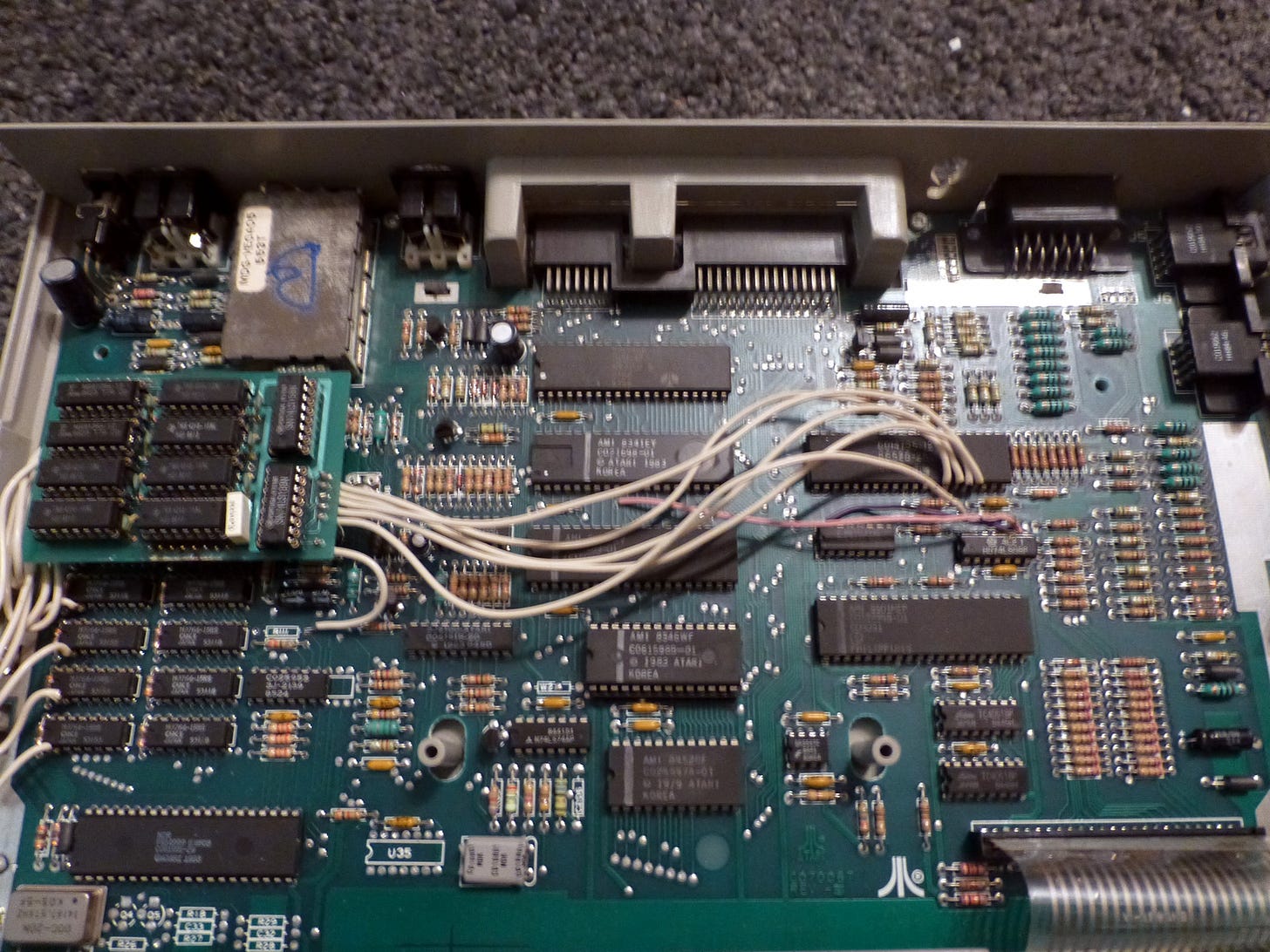Old computers - the remembrance vs. the reality (the Atari era)
Fond memories, but not really the rosiest of times. Computing in the early 80's was a lot more primitive than you probably recall
I have been a computer enthusiast for a long time, having getting my first Atari 800 back in 1980. I had used a Commodore Pet in the mid 70s as part of my “gifted” program in elementary school, and unstructured time with the Apple II+ in high school.
I still have a lot of fond memories of that early era. But putting on my logical hat, and truly remembering the reality of these experiences. Let’s take a trip down memory lane…
The Atari Era - 8-Bit
Not long after the launch, I gathered up my paper route money and bought an Atari 800. I also splurged and bought an 810 floppy disk drive. I never experienced the Cassette tape era. I think I spent about $1,100 complete for the two items. I connected it to an old TV, and plugged in a game (pretty sure it was Caverns of Mars, an early vertical scroller) and played. I also had a copy of Atari basic in a cartridge and began playing with learning Basic formally.
I typed in games from magazines. I learned how to use DOS, I found some friends, and we traded games on floppy.
The pros of this era were:
No booting OS needed, The OS was burned into a ROM on the computer, so booting up was as simple as turning it on. Of course, if you wanted to access disks, you needed to boot with a disk that had DOS written on it Still pretty easy.
Upgrading to a new computer? No problem, just unplug the old one, and plug in the new one. No migration needed, as all your data and programs were on floppy disks.
The cons of this era:
The keyboard was very non-standard. I didn’t understand this back then, but a while back I bought a 130XE and wanted to use it as a computer, and damn, while the letter and numbers were normal, the rest of the keyboard sucked.
The default video option was a wimpy coax cable, and plugged into an RF switch on a TV. To say that this was shite is an understatement. Very quickly I bought a small (12”? 13”?) composite monitor, and that made a huge difference in the experience.
All storage was floppy disks. That meant that 88K was your limit. I bought many optional disk drives that did double density, and double-sided to eke out a little more data. Indus drives were all the rage.
You did a lot of typing of odd and cryptic commands in the DOS menu to run programs. A primitive CLI, but not really.
48K of ram. Ugh. Fortunately, when I had an 800XL, it had 64K, and I was able to upgrade to 128K (by soldering chips, and jumpers, and using programs that could bank switch.
But it was a start, and while I really wanted an Apple II, but that was just too much money.
I bought almost all of my Atari stuff from a local shop called [B&C ComputerVisions], a store in Santa Clara on Stevens Creek Blvd. that pretty much had only Atari goodies. When I bought my retro 130XE, I found that they were still around, but online. I had a conversation with one of the owners (Cathy) and they apparently bought huge amount of the Atari inventory when Atari shut down their computers. You can still buy stuff!
A future post will be about my BBS days, and how I got most of my software…
All in all, it was a good time.
The Atari ST era
I was a dyed in the wool Atari man, so when it was time to jump to 16 bits, the Atari ST was the obvious choice. In 1985, I took the plunge, and bought a 520ST, and a floppy drive, and an ST Color monitor.
Of course, I wanted it to run like its bigger brother, the 1040ST, so once again I upgraded memory manually. That - like the 800XL - required piggyback ram soldering and some jumpers to the board.
Pretty scary stuff…
But it was a great upgrade over the Atari 800 and related lines. It was a true 16bit CPU, it had custom chips to handle graphics, and it even had SCSI input on the back of the machine, so it could be expanded (think hard disk).
At first I just had a pair of the floppy drives, and a boatload of 3&1/2” disks.
I did build a 20 megabyte (yes, that is about 1/30th of the capacity of a CD-ROM) hard disk, in a case with a Seagate mechanism. It was about the coolest thing ever at the time.
Like the 8-bit Atari’s, it came with the OS burned into ROMs and even had the GEM desktop, an early windows-like system with a mouse.
I used it really heavily until I built my first IBM PC clone, a 286, with a generic case, a pair of 5&1/4” floppies, and a YUUUUUGE 80 megabyte Seagate hard drive. But that is for another post.





